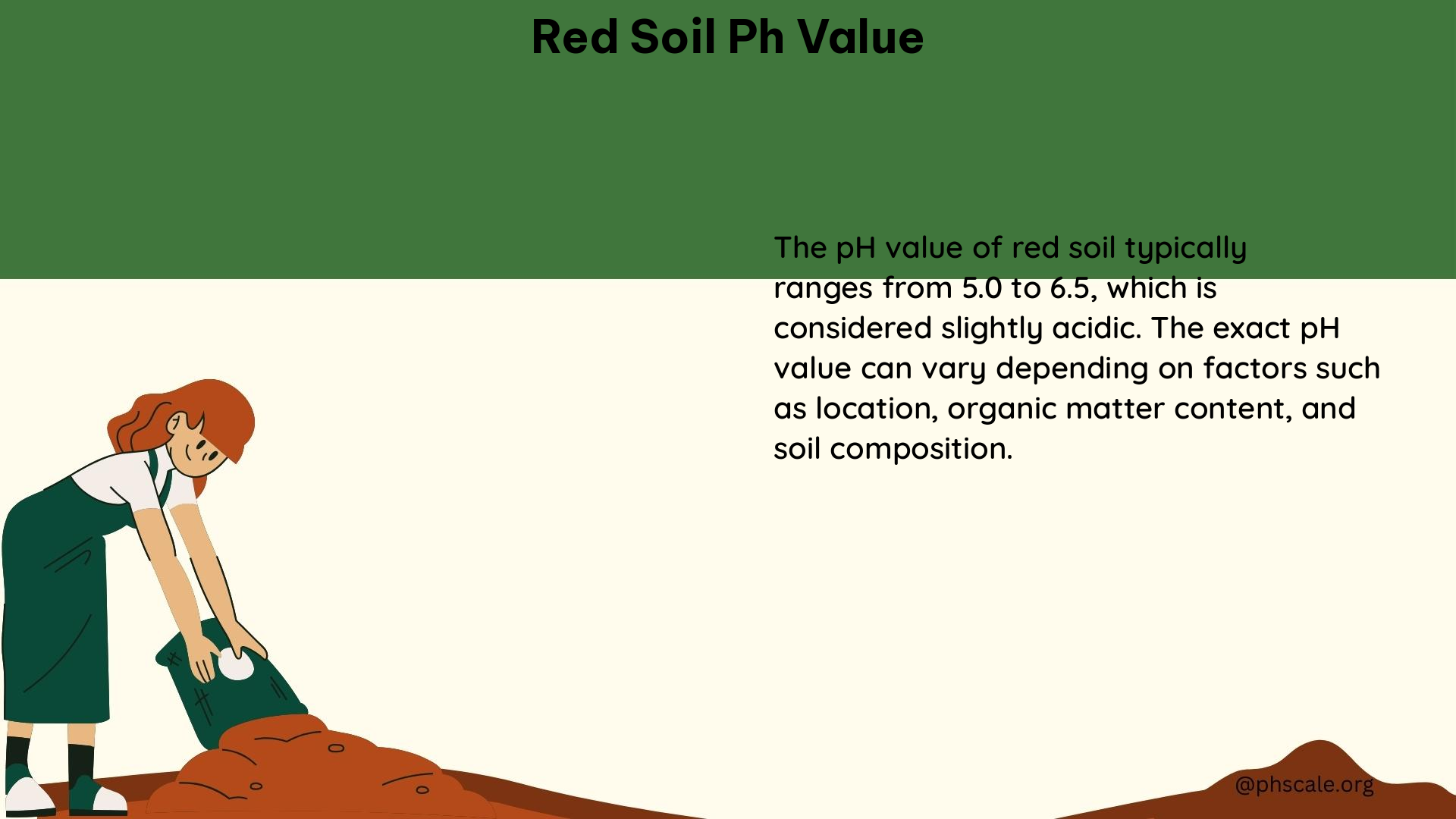The pH value of red soil is a crucial factor in determining the success of your gardening endeavors. This type of soil, characterized by its distinctive reddish hue, is typically acidic, with a pH range that can significantly impact the growth and health of your plants. In this comprehensive guide, we’ll delve into the intricacies of red soil pH, its effects on plant life, and the strategies you can employ to optimize your gardening experience.
Typical pH Range of Red Soil
Red soil is generally classified as acidic, with a pH range typically falling between 5.5 and 6.5. However, in some cases, the pH can be as low as 4.5 or as high as 7.5, depending on various environmental factors and soil composition.
Effect of pH on Plant Growth

The pH of red soil plays a crucial role in the availability and absorption of essential nutrients by plants. Acidic soils can limit the accessibility of certain nutrients, making it challenging for plants to thrive. Most plants prefer a pH range between 5.5 and 7.5, but some species have adapted to grow in more acidic or alkaline conditions.
Measuring pH of Red Soil
Accurately measuring the pH of red soil is essential for understanding its suitability for plant growth. There are several methods you can use to determine the pH of your soil:
- pH Testing Kits: These inexpensive kits use indicator solutions that change color based on the soil’s acidity, providing a quick and easy way to assess the pH.
- Litmus Paper: By mixing a small sample of soil with distilled water and inserting a strip of litmus paper, you can observe the color change, which indicates the soil’s acidity or alkalinity.
- Electronic pH Meters: Commercially available meters use a glass or solid-state electrode to measure the pH in moistened soil or a soil-water mixture, offering a more precise reading.
- Spectrophotometric Methods: Laboratory techniques involving the addition of indicator dyes to the soil extract, which can be compared to glass electrode measurements for accurate pH determination.
Contaminants and Chemicals in Red Soil
Red soil can be susceptible to various contaminants and chemicals that can affect its pH and overall soil health. These include:
- Acid Rain: Acid rain can contribute to soil acidification, which can negatively impact plant growth and soil health.
- Excessive Nitrogen Application: Overuse of nitrogen fertilizers can lead to soil acidification and nutrient imbalances.
- Low Organic Matter: Red soil often lacks sufficient organic matter, which can affect its water holding capacity and nutrient availability.
Balancing pH and Managing Red Soil
To optimize the pH and effectively manage red soil, you can employ the following strategies:
- Liming: Adding lime to raise the pH of acidic soils, making them more suitable for crops that prefer neutral or alkaline conditions.
- Nutrient Application: Introducing nitrogen, phosphorus, and potassium to address nutrient deficiencies and promote healthy plant growth.
- Organic Matter: Incorporating organic matter such as manure or compost to improve soil structure, water holding capacity, and nutrient availability.
- Crop Rotation: Rotating crops to minimize nutrient depletion, reduce pests and diseases, and promote soil health.
History and Importance of Red Soil
Red soil has been an essential resource for agriculture, covering approximately 13% of the Earth’s surface. It is particularly significant in regions like China, India, and Greece, where it makes up a large portion of farmland. Understanding the properties and management of red soil is crucial for successful agriculture in these areas.
By understanding the pH value of red soil and implementing the appropriate strategies, gardeners and farmers can create an optimal growing environment for their plants, ensuring bountiful harvests and thriving landscapes.
References
- Red Soil – an overview | ScienceDirect Topics: https://www.sciencedirect.com/topics/agricultural-and-biological-sciences/red-soil
- Soil pH – Wikipedia: https://en.wikipedia.org/wiki/Soil_pH
- What is the pH of RED SOIL? – YouTube: https://www.youtube.com/watch?v=3mnO9djPqpQ
- Study on the new dynamics and driving factors of soil pH in the red …: https://pubmed.ncbi.nlm.nih.gov/33900476/
- Red soil – Wikipedia: https://en.wikipedia.org/wiki/Red_soil
